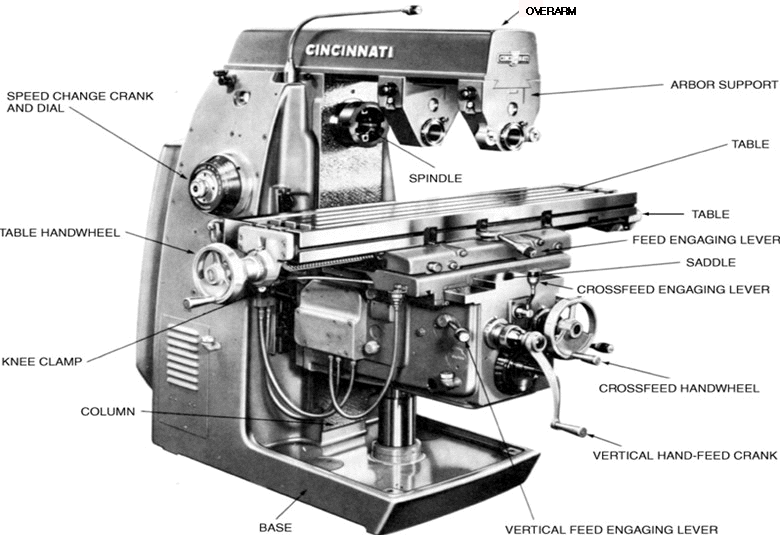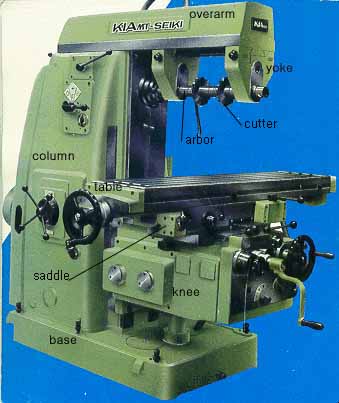|
Milling is a machining operation in which a workpiece is given the desired shape by
the action of a rotating cutter while the workpiece performs linear movements.
In its simplest form the milling cutter is circular disc whose rim is provided with
a specially shaped teeth (cutting edges). Cutters are of many different kinds and shapes.
The work is fed against the teeth of the cutter, while the feed motion is longitudinal,
transverse or vertical, depending on the type of milling machine and the nature of the work.
Milling machines are of the horizontal or the vertical type. A commonly employed horizontal
machine is the knee type. It comprises a massive column which contains the gearbox and
spindle-drive motor and is provided with bearings for the spindle. The spindle speed can
be varied by means of the gearbox. Projecting from the front of the column is the knee,
whose top surface carries the saddle. The latter in turn carries the work table,
which slides in guideways. The motor providing the feed motions for the knee, saddle
and work table is accommodated in the knee. The whole knee assembly can be raised or
lowered by means of a crank handle or by power. The saddle can be traversed across the knee,
and the work table can be moved to and fro in the guideways, by means of handwheels or
by power drive. On some machines the work table can perform an automatic cycle of
predetermined movements: e.g., a fast run to the cutting position, a change to slow
feed motion during the actual cutting, and a quick return to the initial position on
completion of the cut, after which the cycle is repeated. The milling cutter is mounted
on a shaft called an arbor, whose extremity fits into a tapered socket in the driving spindle.
The outer end of the arbor is supported on bearings mounted in the overarm. When the machine
is taking a cut, the saddle is clamped to the knee and the latter is clamped to the column.
The knee-type horizontal milling machine is a so-called plain milling machine.
The universal milling machine, likewise of the knee type, is very similar to the plain milling machine,
but has additional features, including more particularly a work table that can swivel in
a horizontal plane (i.e., about a vertical pivot), so that it can move at angles other than
90 degrees to the spindle axis. A third type of horizontal milling machine is known as
the manufacturing type (particularly the Lincoln type), which is characterized by having
a work table that is fixed in height, the spindle being vertically adjustable, since it is
mounted in a head that can be moved up or down the column of the machine. These machines
are designed for heavy-duty milling. The work table slides on a bed that is supported
directly on the foundation of the machine.
A vertical milling machine may be of the knee type and apart from having a vertical spindle,
is generally similar to the horizontal milling machine. The spindle is carried in a head that
is vertically adjustable on the column, being provided with down feed by means of worm gearing.
|

